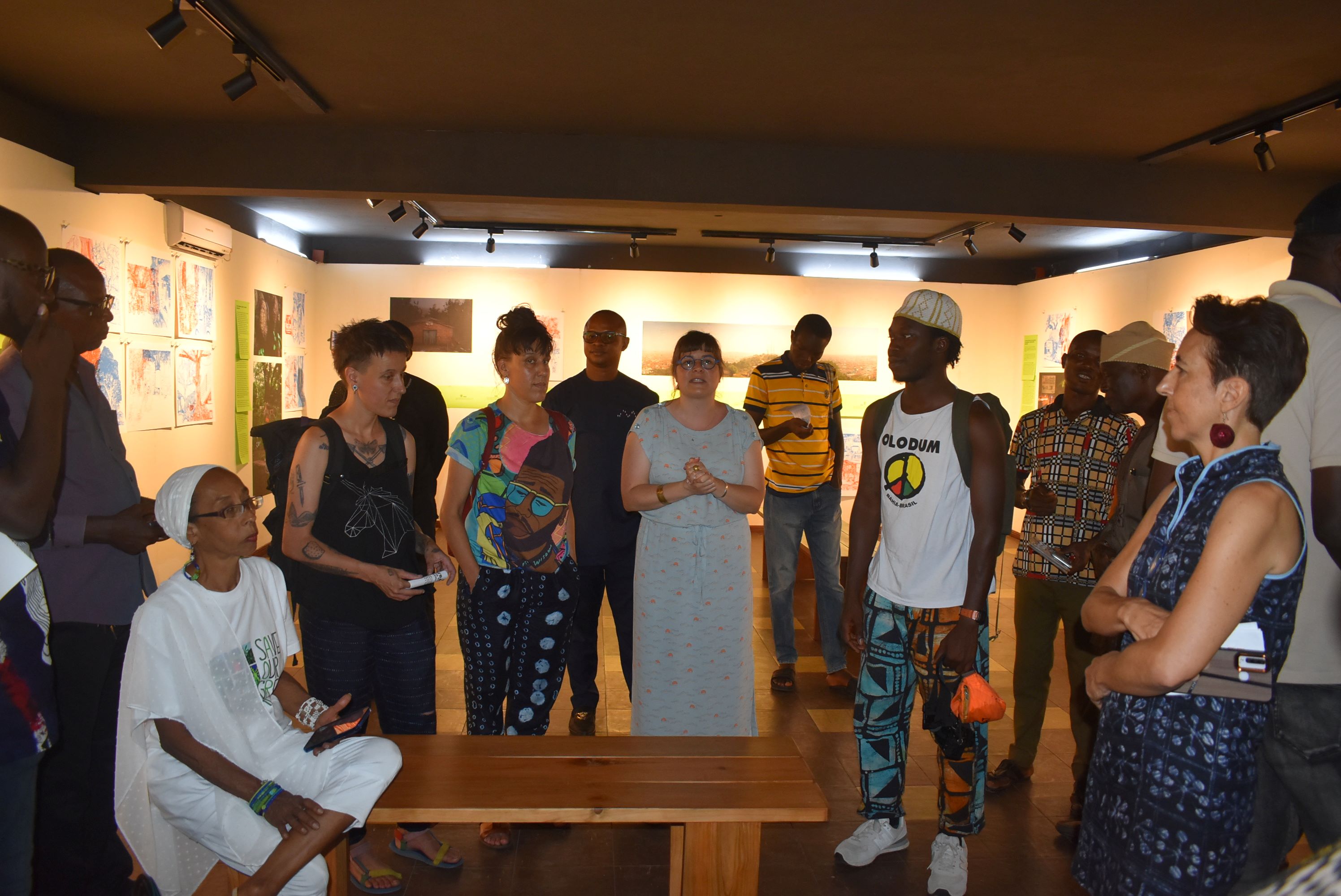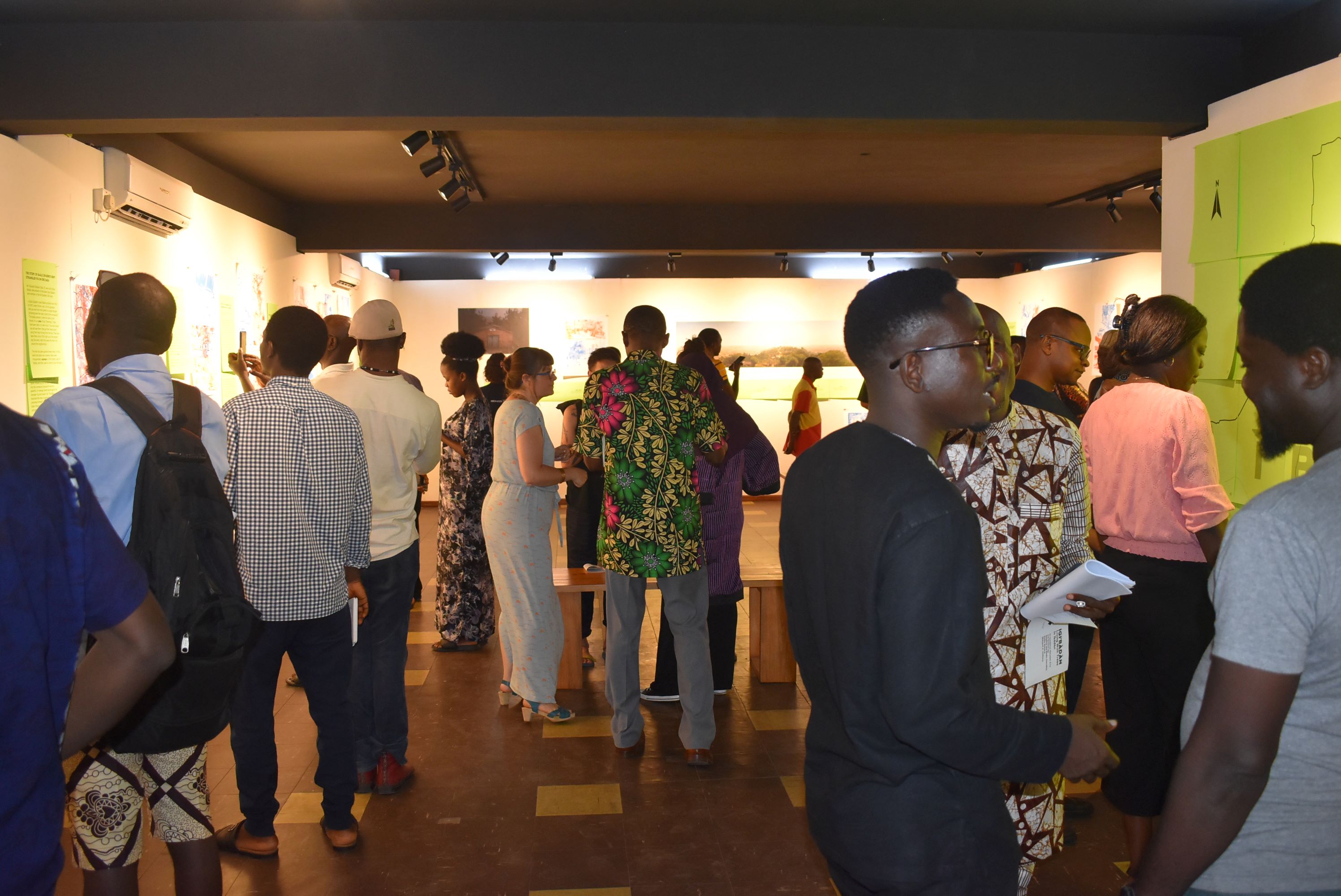Igi'bàdàn. Living With Trees In Ìbàdàn. An Exhibition Between Arts And Science
 Between the 13th of June and 15th of July an exhibition titled “Igi'bàdàn. Living With Trees In Ìbàdàn. An Exhibition Between Arts And Science” took place at the Cornelius Adepegba Museum of African Art inside the Institute of African Studies of the University of Ibadan. The exhibition gathered works conducted since 2017, with the visual artists Delphine and Elodie Chevalme, and from 2022 with the photographer Obáyomí A. Anthony, Emilie Guitard (CNRS / Prodig) started a collaboration between arts (drawing, cyanotype, photography) and science (anthropology) in Ìbàdàn, in south-west Nigeria, on local knowledge and the relations of the inhabitants to the vegetation present in the city.
Between the 13th of June and 15th of July an exhibition titled “Igi'bàdàn. Living With Trees In Ìbàdàn. An Exhibition Between Arts And Science” took place at the Cornelius Adepegba Museum of African Art inside the Institute of African Studies of the University of Ibadan. The exhibition gathered works conducted since 2017, with the visual artists Delphine and Elodie Chevalme, and from 2022 with the photographer Obáyomí A. Anthony, Emilie Guitard (CNRS / Prodig) started a collaboration between arts (drawing, cyanotype, photography) and science (anthropology) in Ìbàdàn, in south-west Nigeria, on local knowledge and the relations of the inhabitants to the vegetation present in the city.
Founded in the first half of the 19th century, Ìbàdàn now has a population of around 4 million living in an area of about 700 km2, mostly Yorùbá. Despite this high population, the city is still home to a large number of trees of various species, some of which are centuries old, and to several large, wooded areas of various types: wooded hills, botanical gardens, private parks, cemeteries, wastelands, etc.
Combining drawings, nocturnal and naturalistic photographs, cyanotypes on textiles and extracts from the notebooks filled during the ethnographic survey, carried out since 2016 with the invaluable help of Adédèjì Adébáyò, Léye Kómoláfé and Fred Akinyemí, this exhibition offered an insight into the rich relations that Ìbàdàn's inhabitants have with the vegetation that surrounds them. More than just elements of the urban landscape or objects of amenity, trees and wooded areas are supports for urban memories and the history of the city, land markers, stocks of medicinal resources, nodes in the network of ritual spaces that weaves the city, and places of work, trade, leisure and daily sociability. In this way, they contribute to creating special urban atmospheres, whose experience changes over the course of the day and night, as well as with the seasons. However, Ìbàdàn's vegetation is also under threat: from urban expansion and densification, but also from land speculation, combined with a certain conception of urban modernity shared by many city dwellers and the city authorities, which gives priority to buildings and concrete over plants and living things, or from competition between religions, where trees in particular become stakes and targets.
More than just a utilitarian approach, their collective work reveals the complexity of relationships with plants in a major city in sub-Saharan Africa. Contrary to an oversimplistic vision of the place to be given to nature in the city, mediated by the trendy concept of the ‘sustainable city’, the daily cohabitation of city dwellers and plants in Ìbàdàn allows us to consider other ways of living with natural elements in the city, from Nigeria to the rest of the planet.


Social Media
Mailing List